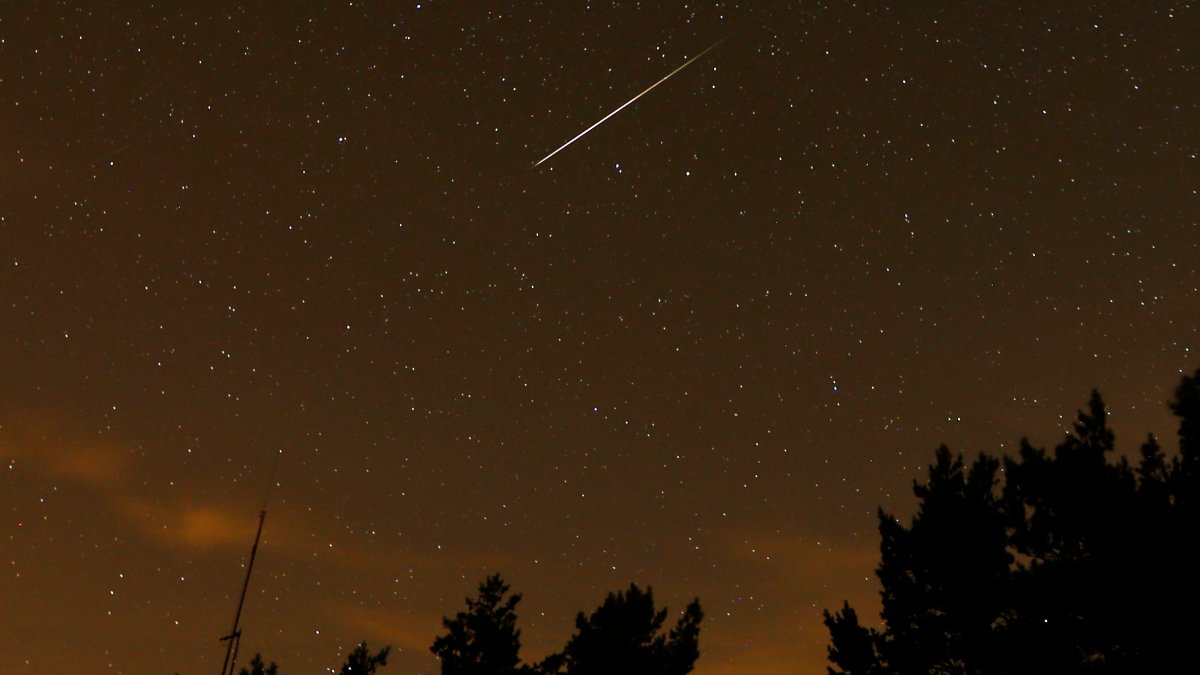Perhaps the best meteor shower of the year is about to dazzle skies beginning Monday — and this spot near Illinois may be one of the best — and most unknown — places to see it.
The annual meteor shower, active since July, peaks before dawn Monday, Aug. 12. It’s one of the brightest and most easily viewed showers of the year, producing “bright blue meteors — and lots of them,” said University of Warwick astronomer Don Pollacco.
According to the Adler Planetarium, a peak of above 50-90 meteors per hour are expected — but there’s a catch: Far fewer meteors will be seen in light-polluted areas, the Adler said.
“One rule of thumb for meteor viewing is to be under a dark sky, with no glare from artificial or natural light (like the Moon),” the Adle said. “This year, the Perseids peak when the Moon is near its first quarter phase. However, the first quarter Moon rises around noon local time and sets around midnight; so its glare won’t interfere with the Perseids during their peak between midnight and dawn.”
While the moon won’t interfere with the peak of the Perseids, Chicago’s city lights might. But in a certain area of Wisconsin, they might not.
According to Forbes editors, Wisconsin’s Kickapoo Valley Dark Sky Park — a park that would be made up of Kickapoo Valley Reserve, Wildcat Mountain State Park and Mississippi Valley Conservancy — is one of 11 “secret places” in the nation to watch the meteor shower.
Editors describe the area, approximately 50 miles west of Wisconsin Dells, as an “off-the-beaten-path location” with pristinely-dark skies that make for excellent stargazing.
The area — which, if designated, would be Wisconsin’s second “Dark Sky Park,” after Newport State Park — has a number of suggested skygazing maps across three different locations.
“The public land along the Kickapoo River in Vernon County has been known for years for fantastic night sky viewing,” the Kickapoo Valley Dark Sky Initiative said.
If you aren’t able to travel, you still may be able to some “shooting stars.”
“To spot meteors, first go outside and give your eyes about 20–30 minutes to adjust to the dark,” the Adler said. “Look all around the sky for quick streaks of light.”
The streaks are caused by superheated, “glowing air” as the tiny pieces of comet burn up due to friction with the atmosphere, the Adler goes on to say.
“You don’t need any special viewing tools to see meteors, you won’t see the meteors any better using binoculars or a telescope. Meteors range over a wide expanse of sky, so you don’t want to limit your view to a tiny window.”
NBC 5 Storm Team Meteorologist Kevin Jeanes noted it will be most visible Monday between midnight and dawn, and will even be visible for weeks after.
Another big meteor shower, the Geminids, comes in December, but that one is often harder to catch since the weather is much colder.
“You don’t have to freeze your tail off to go look at a meteor shower,” Jeanes said, of the Perseids.
What is a meteor shower?
Multiple meteor showers occur annually and you don’t need special equipment to see them.
Most meteor showers originate from the debris of comets. The source of the Perseids is the comet 109P/Swift-Tuttle.
When rocks from space enter Earth’s atmosphere, the resistance from the air makes them very hot. This causes the air to glow around them and briefly leaves a fiery tail behind them — the end of a “shooting star.”
The glowing pockets of air around fast-moving space rocks, ranging from the size of a dust particle to a boulder, may be visible in the night sky.
The Perseids result from “bigger particles than a lot of other showers,” said NASA’s Bill Cooke, giving them the appearance of “bright fireballs” — easier to spot than many others.
How to view a meteor shower
Meteor showers are usually most visible between midnight and predawn hours.
It’s easier to see shooting stars under dark skies, away from city lights. Meteor showers also appear brightest on cloudless nights when the moon wanes smallest.
The Northern Hemisphere will have the best view of the Perseids. This year’s peak coincides with a moon around 44% full.
When is the next meteor shower?
The meteor society keeps a list of upcoming large meteor showers, including the peak viewing days and moonlight conditions.
The next major meteor shower will be the Orionids, peaking in mid-October.
